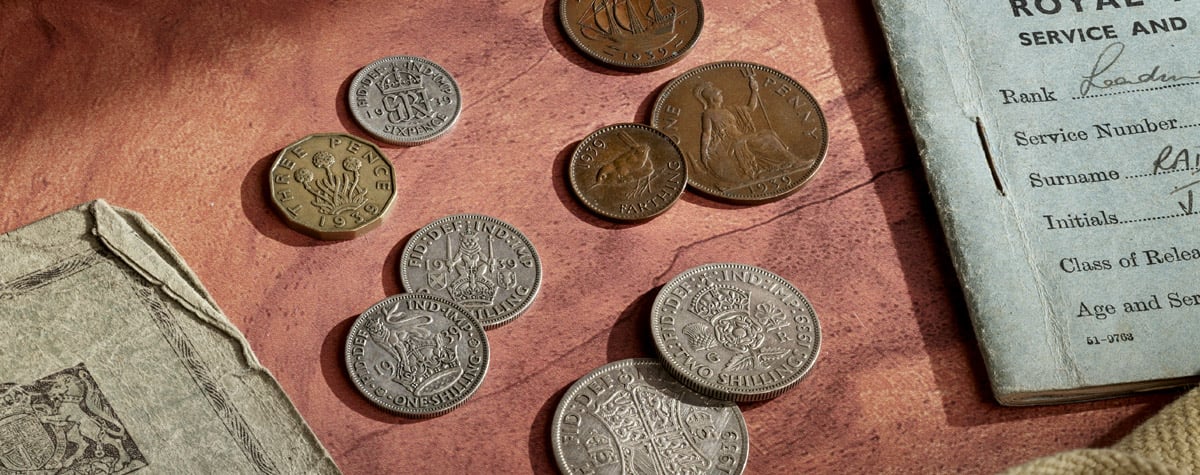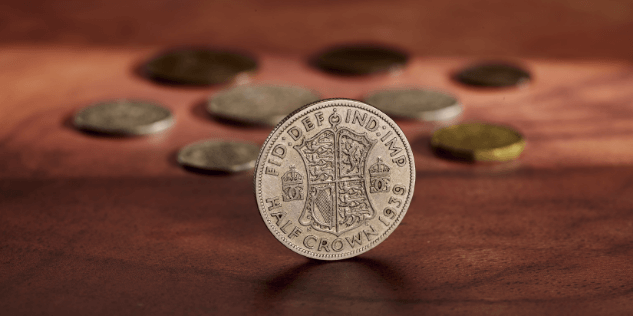-
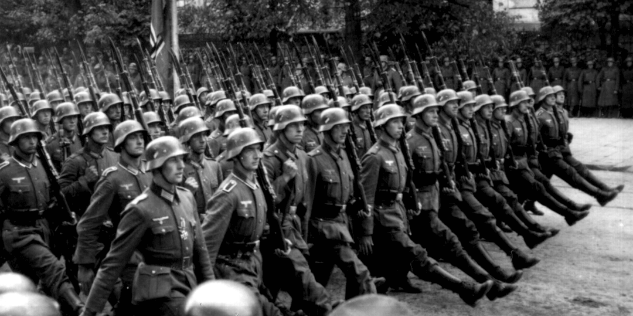
September 1939
War breaks out in Europe after Germany invades Poland.
-
December 1939
The Battle of the River Plate is the first major naval engagement of the Second World War. The German pocket battleship Graf Spee poses a major threat to Allied shipping having already sunk eight merchant vessels in the Atlantic and one in the Indian Ocean since ecember. Hunted down by a group of British warships commanded by Commodore Henry Harwood, who guesses correctly that the Graf Spee is headed to the busy shipping lanes near the River Plate in South America, she holes up in the port of Montevideo in neutral Uruguay. Forced to leave, Graf Spee’s commander Hans Langsdorff overestimates the strength of the forces waiting for him and takes the decision to sink his ship rather than face another battle.
-
-
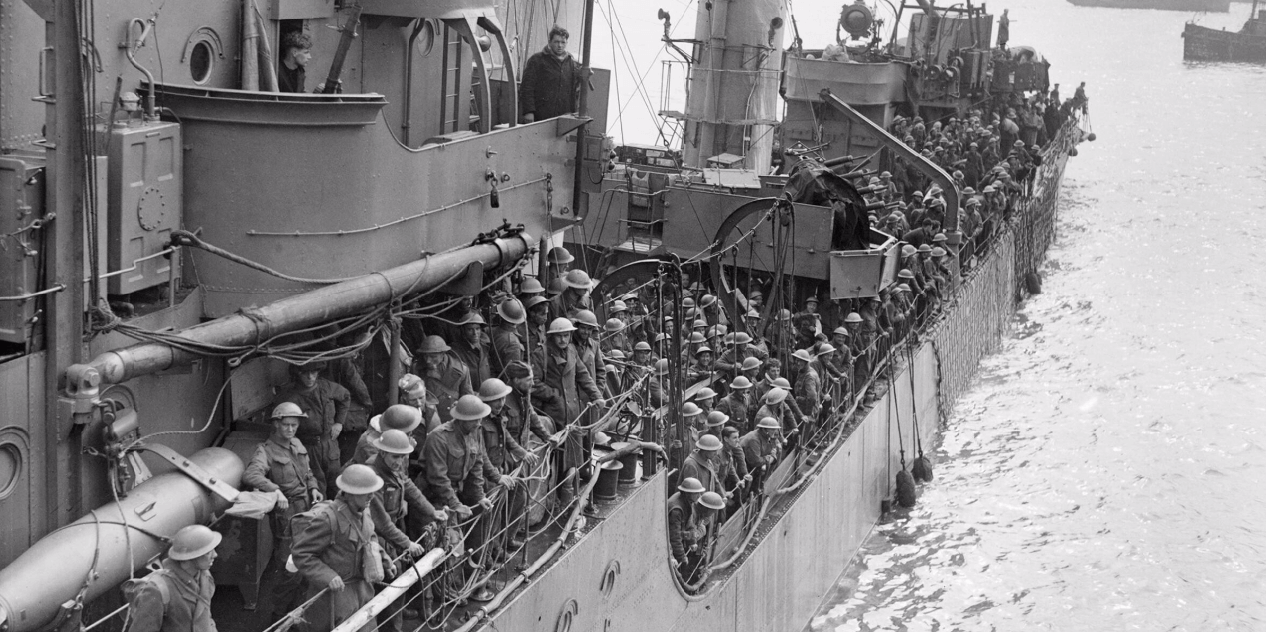
May-June 1940
Germany invades France, Belgium and the Low Countries. The British Expeditionary Force is evacuated from Dunkirk along with French, Canadian and Belgian troops and France falls soon after.
-
Summer 1940
For three long months, the Royal Air Force (RAF) defies Hermann Goering’s Luftwaffe to stave off the threat of invasion. Making good use of the world’s best radar network, technologically advanced Spitfire and Hurricane fighter aircraft, and squadrons supplemented by pilots who had escaped from German-occupied Eastern Europe as well as those from Canada, New Zealand, Belgium, France, Australia, South Africa, the US, Ireland, Barbados, Jamaica and Rhodesia (now Zimbabwe), Britain takes the fight to Germany, aided and abetted by a key tactical mistake. Provoked by the British bombing German cities, Hitler switches his focus from strategic to civilian targets, buying the RAF time to recover and ultimately carry the day. Without command of the air, Hitler is unable to launch his planned seaborne invasion – Operation Sea Lion. The Battle of Britain proves to be a crucial turning point.
-
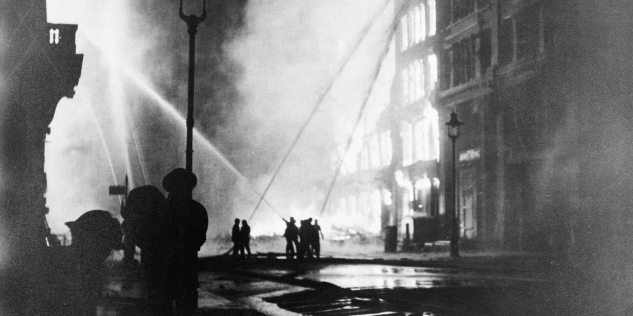
September 1940
The Luftwaffe begins a sustained bombing campaign against British cities that lasts for eight months.
-
-
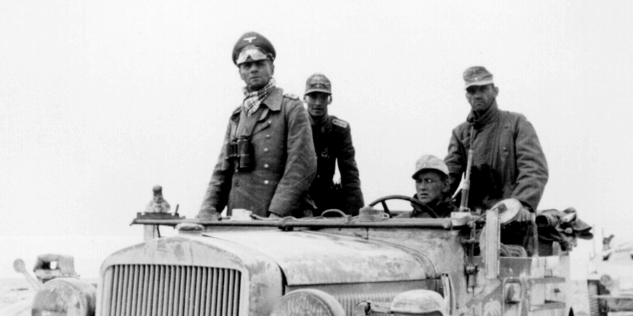
February 1941
Hitler dispatches troops to North Africa to bolster his Italian ally, the fascist dictator Mussolini. This force is known as the Afrika Korps and is commanded by General (Field Marshall) Rommel.
-
April 1941
Rommel makes the capture of the strategically important deep-water port at Tobruk his first main objective. The German offensive catches British forces in Libya by surprise and they retreat hundreds of miles towards Tobruk. Rommel pushes on to try and capture the port before the Allies can organise themselves but the 9th Australian Division, supported by British tanks and artillery, hold firm in the face of the initial assault. Facing extreme heat and dwindling supplies, morale remains high amongst the defenders who revel in their ironic nickname ‘The Rats of Tobruk’. The Australian defenders are relieved by British, Polish and Czech troops in August, and the siege is finally broken in December during Operation Crusader.
That same month, Germany invades Yugoslavia, which has a newly installed pro-Allied government, and also supports the Italian invasion of Greece that had begun in October the previous year.
-
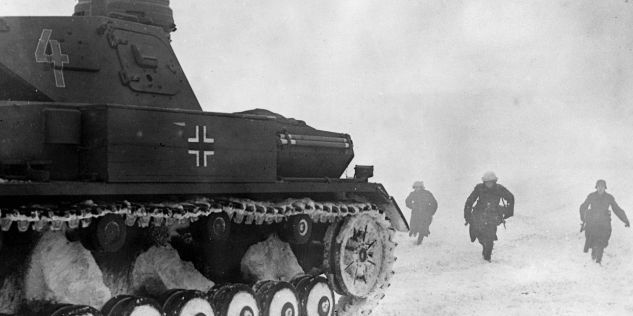
June 1941
Hitler turns his attention eastwards and launches Operation Barbarossa, the invasion of the Soviet Union.
-
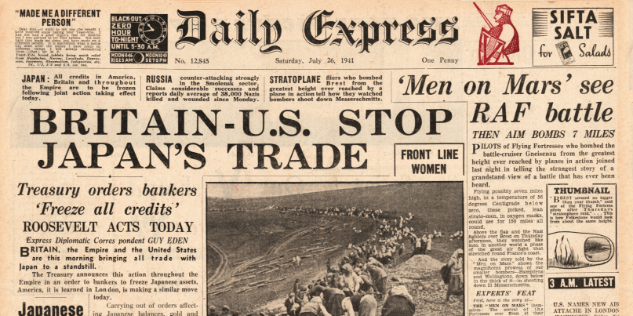
July 1941
Japan sends troops to French Indo-China (now Vietnam). Britain and the US retaliate with an oil embargo.
-
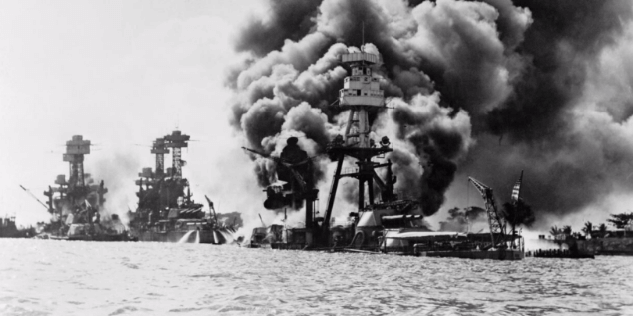
December 1941
Japan launches a surprise attack on the US naval base at Pearl Harbor before invading a series of European colonies across eastern Asia.
-
-
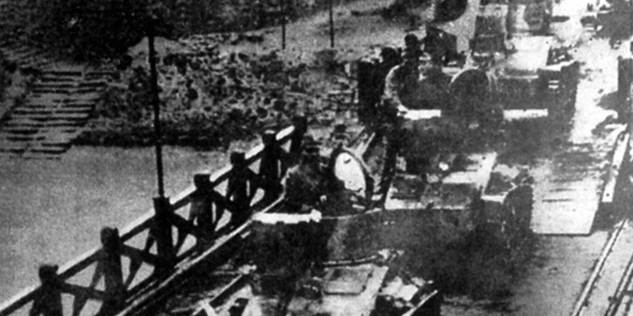
February 1942
Japanese forces capture Singapore, handing Britain its worst defeat of the war.
-
March 1942
RAF Bomber Command is able to call upon a new aircraft – the Avro Lancaster, which goes on to become the RAF’s principal heavy bomber, whilst Acting Air Chief Marshal Arthur Harris (Air Chief Marshal Sir Arthur Harris) takes over as leader. Under Harris’ command, the RAF begins the area bombing of German cities, a strategy conceived to destroy both factories and those who work in them. The move away from precision bombing, which had proved virtually impossible, to the targeting of whole cities was deemed necessary in a bid to turn the tide of the war that the enemy appeared to be winning.
-
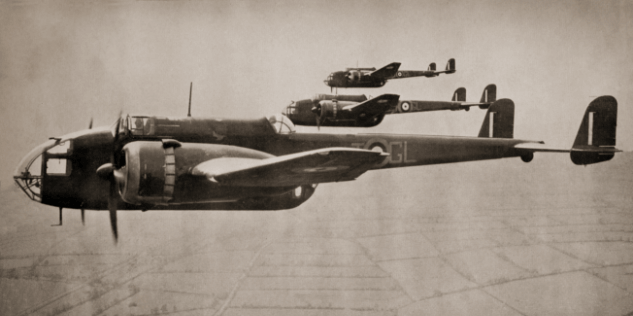
May 1942
To demonstrate the potential of this new tactic, Harris sends 1,000 bombers to attack the industrial city of Cologne, causing massive damage.
-
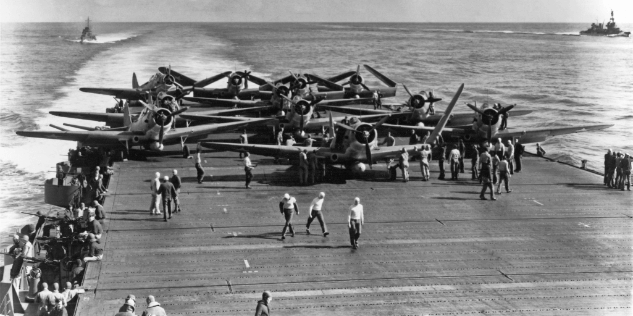
June 1942
The US severely weakens Japan’s aircraft carrier fleet with victory at the Battle of Midway.
-
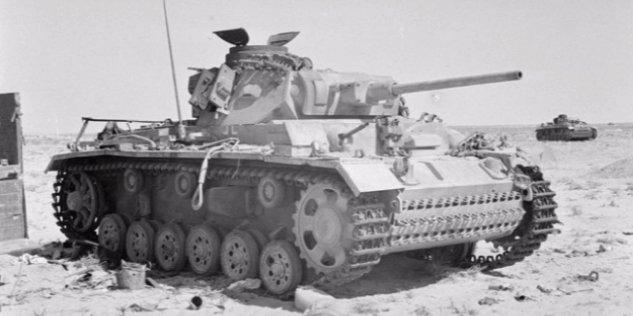
November 1942
After a back-and-forth struggle in North Africa, the Allies score a decisive victory at the Battle of El Alamein. From this point onwards, General (Field Marshal) Rommel’s forces are in retreat.
-
-
February 1943
The Soviet Union inflicts a catastrophic defeat on Germany that marks a major turning point on the Eastern Front. The previous summer Hitler had launched an offensive into southern Russia, which met with initial success. General Friedrich Paulus was then ordered to capture the city of Stalingrad. Defending at all costs, the Russians manage to maintain a toehold in the city, which becomes the scene of bitter street fighting. Meanwhile, Soviet General Georgi Zhukov builds up reinforcements and in November 1942 launches a huge offensive to trap Paulus’s army. Forbidden to break out by Hitler, by the time the Germans finally surrender, they have lost almost 500,000 men.
-
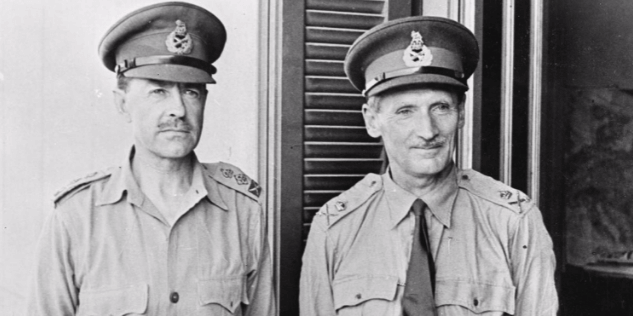
May 1943
The Allies secure victory in North Africa.
-
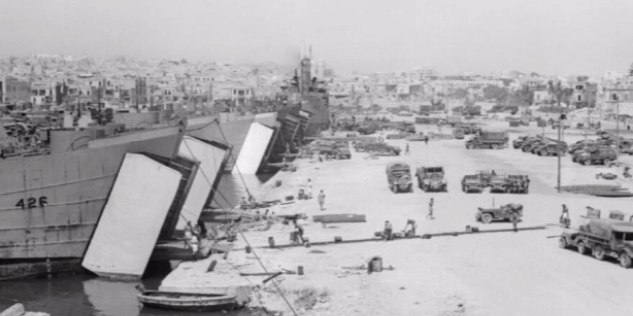
July 1943
The Allies invade Sicily and Mussolini is deposed.
-
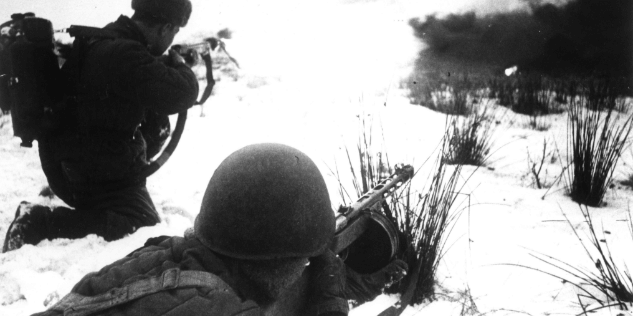
July 1943
Germany is forced into full retreat on the Eastern Front.
-
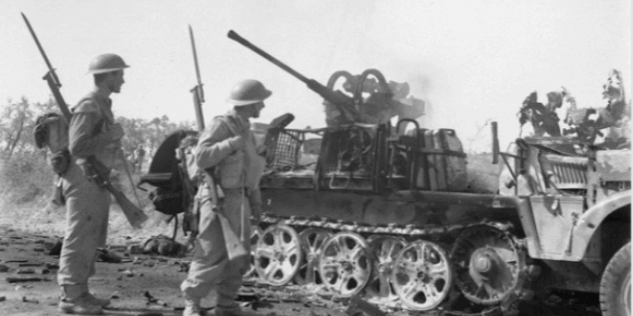
September 1943
The Allies land in mainland Italy but meet determined German resistance.
-
-
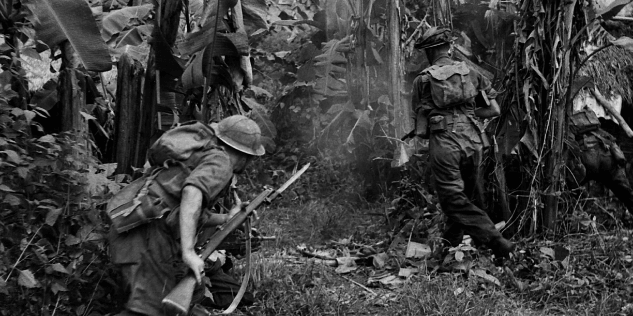
March 1944
Japan attempts to push British and Commonwealth forces back into India by destroying their bases at Imphal and Kohima; this leads to some of the most visceral fighting of the entire war.
-
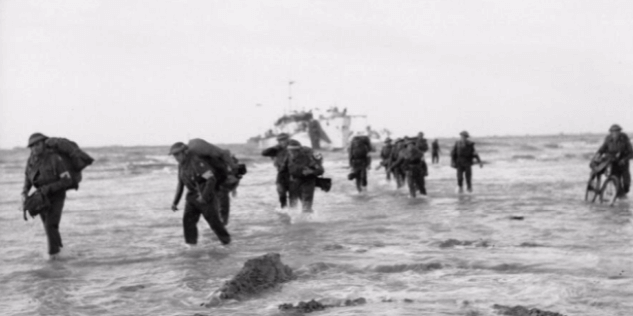
June 1944
The Allies successfully land ground troops on five Normandy beaches. D-Day is the largest amphibious assault in military history.
-
September 1944
After the success of the Normandy landings, the Allies look to end the war as quickly as possible. Field Marshal Montgomery devises an ambitious plan to open a back-door route into Germany through the Netherlands. To succeed, the Allies must capture the strategically important bridge at Arnhem. Operation Market Garden begins with the dropping of British 1st Airborne Division behind enemy lines, followed by Polish paratroopers, but the Allies’ task is complicated by bad weather and determined German resistance. The Dutch cities of Eindhoven and Nijmegen are liberated but the operation comes up short of securing a foothold on the other side of the Rhine.
-
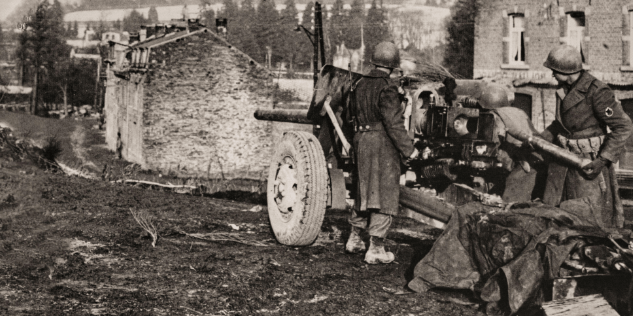
December 1944
Hitler launches a desperate counteroffensive in the Ardennes. After some initial success, it is contained and then routed.
-
-
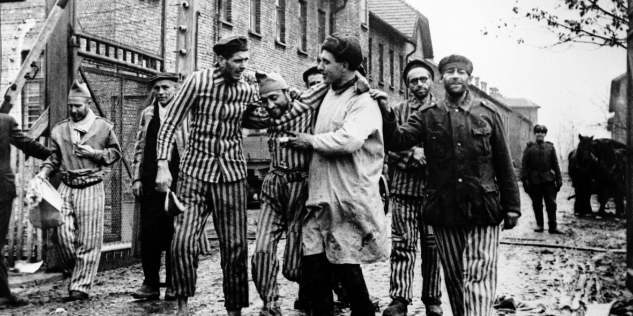
January 1945
The concentration camp complex at Auschwitz-Birkenau is liberated by Soviet forces.
-
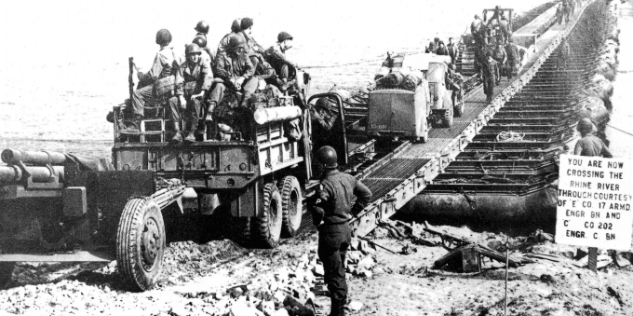
March 1945
The Allies cross the Rhine, the last remaining obstacle into the heart of Germany.
-
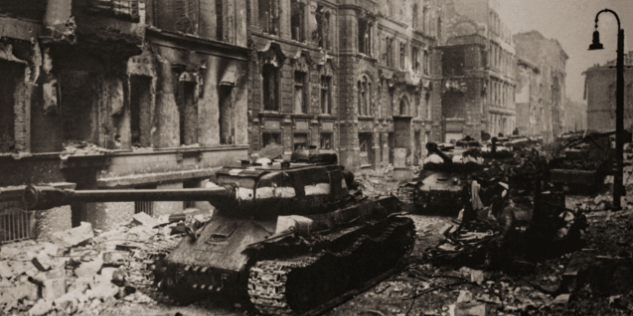
April 1945
Soviet Forces capture Berlin, which ends the war in Europe.
-
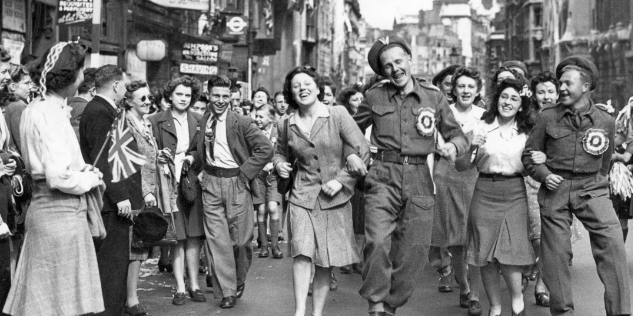
May 1945
Following Germany’s surrender, 8 May is declared Victory in Europe (VE) Day. Euphoric celebrations take place across Britain but Japan has yet to be defeated.
-
July 1945
Victory at the Battle of Okinawa gives the Allies a base to launch a seaborne invasion of Japan’s home islands. Code-named Operation Downfall, US General Douglas MacArthur is put in charge. Any invasion will incur terrible casualties and, as Allied commanders plan for a November offensive, deep in the New Mexico desert a top-secret research project yields an alternative option. On 16 July, the Trinity Test sees the first successful detonation of an atomic bomb. This terrifying new technology will be used to devastating effect to speed up the end of the war.
-
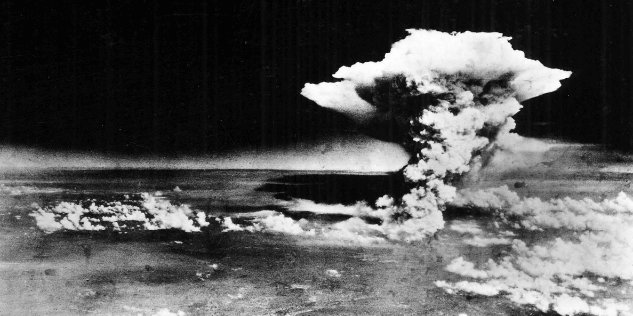
August 1945
The annihilation of Hiroshima and Nagasaki by the atomic bomb, combined with the Soviet invasion of Manchuria, forces Japan to surrender.
-
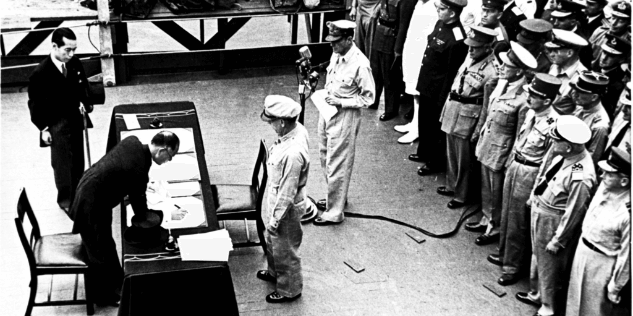
September 1945
Japan’s surrender is formally signed aboard the USS Missouri in Tokyo Bay. The war is officially over.
-
-

